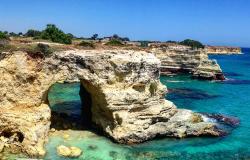On 7 May, bones of the city's patron saint begin their famous journey by boat around the bay to be received by people dressed in period costume as they were when the remains of Nicholas arrived from Turkey in the 11th century; at the time, Bari had beaten out Venice in a plea for the relics of the saint when the city of Myra in Asia Minor (the previous burial spot of Saint Nicholas) had been overtaken by Saracens.
An austere procession of over five hundred people then covers the city streets, illuminated by three hundred torches. The festival is rounded out by plenty of music, theatre, and dancing.
San Nicola is known for being a pious, zealous, generous bishop who performed many miracles, although one often attributed to him is apparently a big misunderstanding. As legend goes, the saint's parents died in an epidemic when he was young, leaving him a small fortune that he wished to donate to charitable causes. Soon thereafter, he came upon three daughters having trouble finding husbands because they were so poor, so a young Nicholas threw a bag of gold into their house. That money became a dowry for the eldest girl, who was accepted into marriage.
Nicholas did the same for the other two girls, and indeed, many representations of Nicholas included three purses symbolizing his selfless acts; unfortunately, they became mistaken for the heads of three children, and the story arose that Nicholas had resuscitated the young ones who had been killed and pickled by an innkeeper. Interesting and dramatic, but apparently entirely untrue.
Saint Nicholas is also celebrated on December 6, on the anniversary of his death, and yes, this is the very same Saint Nicholas we also know as Father Christmas.







